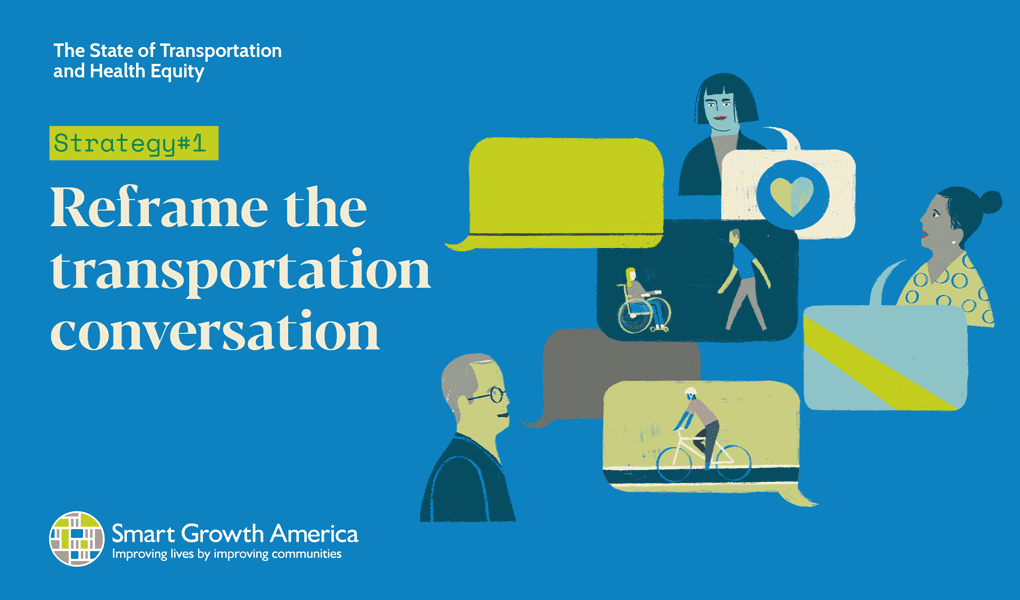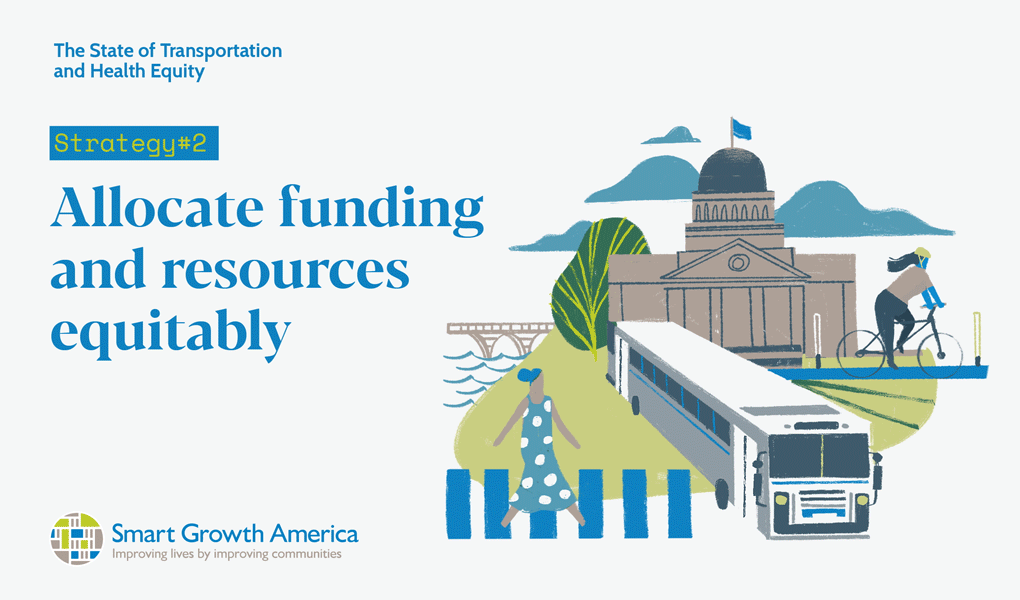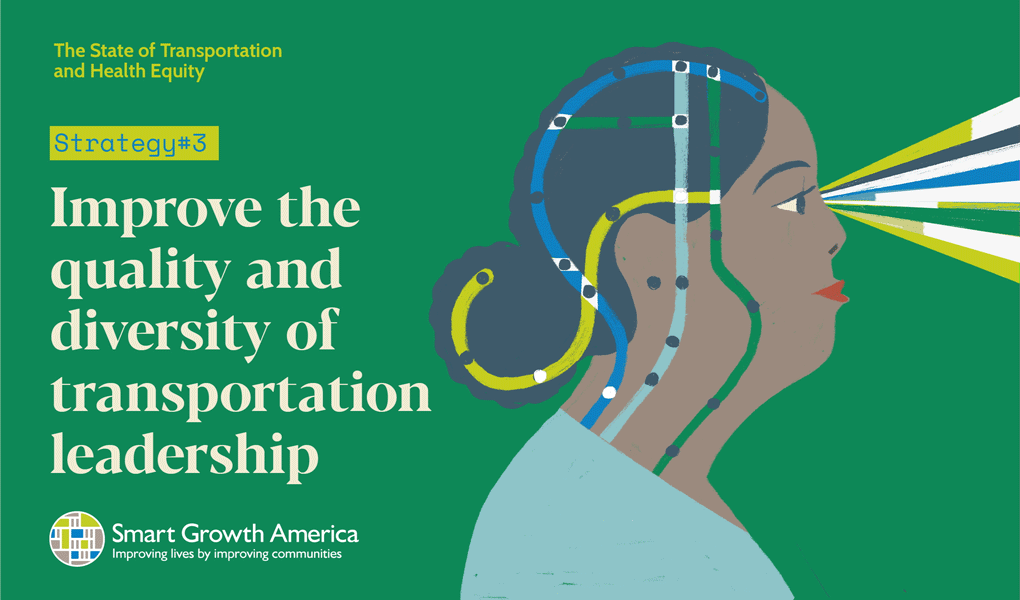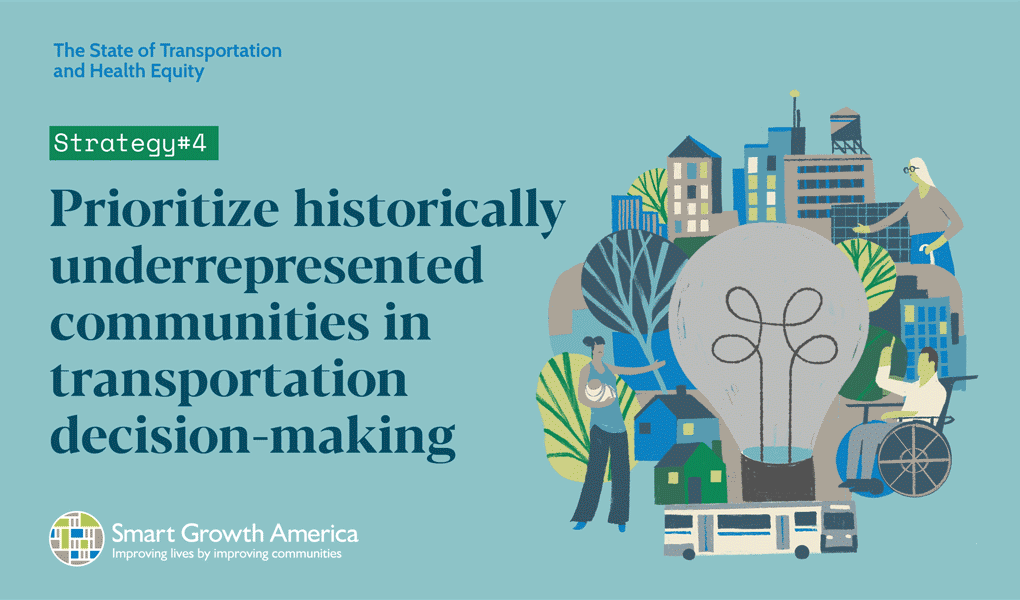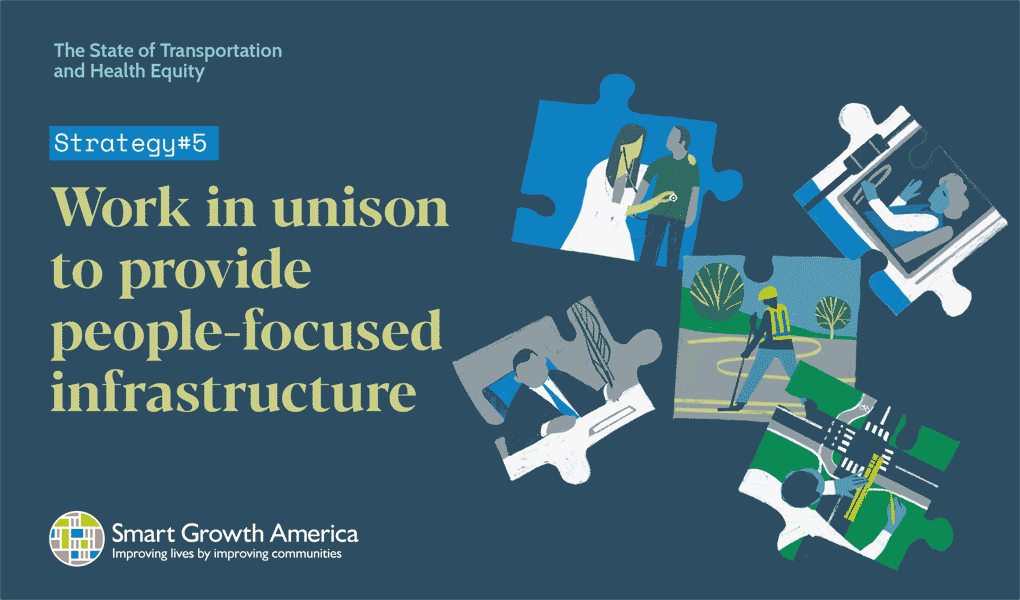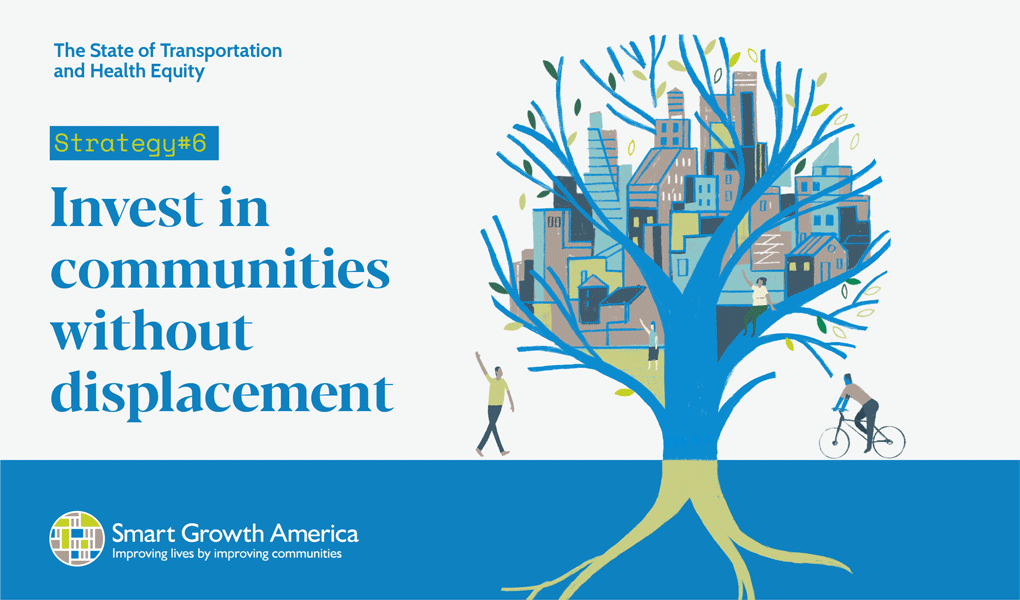
News
By Mae Hanzlik, December 17, 2019
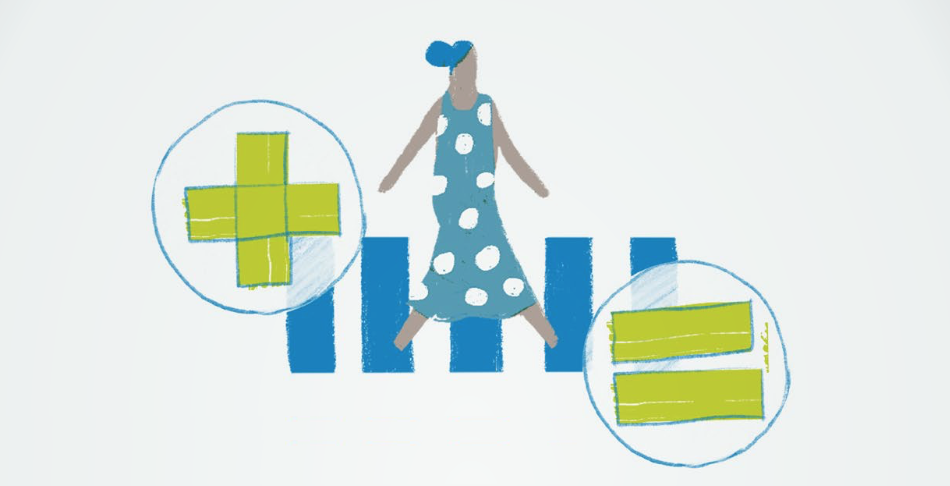 The State of Transportation and Health Equity, a field scan from Smart Growth America looks at the intersection of transportation and health equity in the U.S. today. Informed by 92 experts working across disciplines at the local, state, and federal level across the country, the report identifies the biggest challenges to health equity facing our transportation system and the strategies we should use to address them.
The State of Transportation and Health Equity, a field scan from Smart Growth America looks at the intersection of transportation and health equity in the U.S. today. Informed by 92 experts working across disciplines at the local, state, and federal level across the country, the report identifies the biggest challenges to health equity facing our transportation system and the strategies we should use to address them.
To understand what healthy equity is and how it relates to transportation, this story from Emiko Atherton, Director of the National Complete Streets Coalition, is helpful.
Growing up in southeast Seattle in the eighties, in what was and continues to be one of the most racially and ethnically-diverse parts of the city, my neighborhood shaped who I was—where I played, where my parents could buy healthy food, and where I could get a summer job once I was old enough. I knew growing up that my neighborhood didn’t have the same infrastructure that other neighborhoods had and it impacted our ability to get around; we didn’t have sidewalks or streetlights, and my bus line was considered one of the most dangerous routes in the city.
Our infrastructure was much more than just an inconvenience, it negatively impacted our health. This wasn’t just a problem in my neighborhood, but an issue in neighborhoods throughout the country, whether in a city, small town, or rural place. People’s ability to live healthy lives to their full potential was determined by their address.
Since my childhood, both the public and private sectors have made great strides to reduce geographic and racially-based health disparities. However, to date, these efforts are just beginning to make dents in addressing the issues, especially in mid-sized cities and rural areas. Public health and transportation advocates and professionals have been leading this charge, but we still have a lot of work to do. The good news is that unlike so many public health crises that seem intractable, we have the tools to build healthy, thriving communities for all.
The State of Transportation and Health Equity, released today, identifies the biggest challenges to health equity facing our transportation system and the best tools to address the problem. Organized into 6 critical areas; each section outlines challenges, corresponding strategies, as well as success stories from around the country.
This field scan shows is that we have the solutions, but creating an equitable transportation system will require stakeholders from across levels and disciplines to improve the system both from within and from outside.
To advance health equity through transportation, stakeholders must:
1. Reframe the transportation conversation.
The current messaging, narratives, and language around creating an equitable transportation system are not working. Those who care about health equity are failing to motivate our policy makers or help them understand the implications of their actions. Advocates and professionals need to reframe transportation and transportation solutions around values that people care about, such as having the freedom to choose how to travel.
Click on each of the gifs below to get a larger, downloadable version to share.
2. Allocate funding and resources equitably.
At all levels of government, transportation funding and resources support projects that prioritize high-speed car travel over getting people where they need to go in a safe, convenient, accessible, and affordable way. Improvements must be made at the federal, state, and local levels to ensure that funding and resources advance a multimodal system that puts people first.
3. Improve the quality and diversity of transportation leadership.
Poor decision-making and weak leadership at all levels of government have created a built environment that is not easy or affordable to fix. Our decision-makers need to better represent our communities, especially the most disenfranchised populations and must commit to advancing a people-centered transportation vision.
4. Prioritize historically underrepresented communities in transportation decision-making.
Disenfranchised communities have held very little power in influencing the transportation decision-making process. Authentic, meaningful community engagement should be a collaborative, not extractive, process. It requires an intentional allocation of both time and resources and should focus on listening to the voices that have been excluded or isolated.
5. Work in unison to provide people-focused infrastructure.
Historically, our government departments and agencies have operated in silos. At every level of government, transportation, health, housing, and planning agencies have occupied their own spheres of influence, with equity treated as an afterthought, if at all. Government agencies and departments must work in unison to provide people-centered infrastructure.
6. Invest in communities without displacement.
The U.S. has a long history of displacing people of color in the name of “prosperity.” The displacement happening today is no different. While transportation investments can improve health outcomes in communities, we need to ensure that those who live there (and suffer the most) can benefit from the improvements and aren’t just displaced to another area with bad outcomes.
Download The State of Transportation and Health Equity
This field scan is part of a larger effort that the Robert Wood Johnson Foundation is supporting in order to understand the most promising opportunities to achieve equitable public infrastructure. In addition to Smart Growth America’s research on surface transportation, other organizations worked on field scans of broadband, energy, and water.
Related News

© 2026 Smart Growth America. All rights reserved
Site By3Lane Marketing







